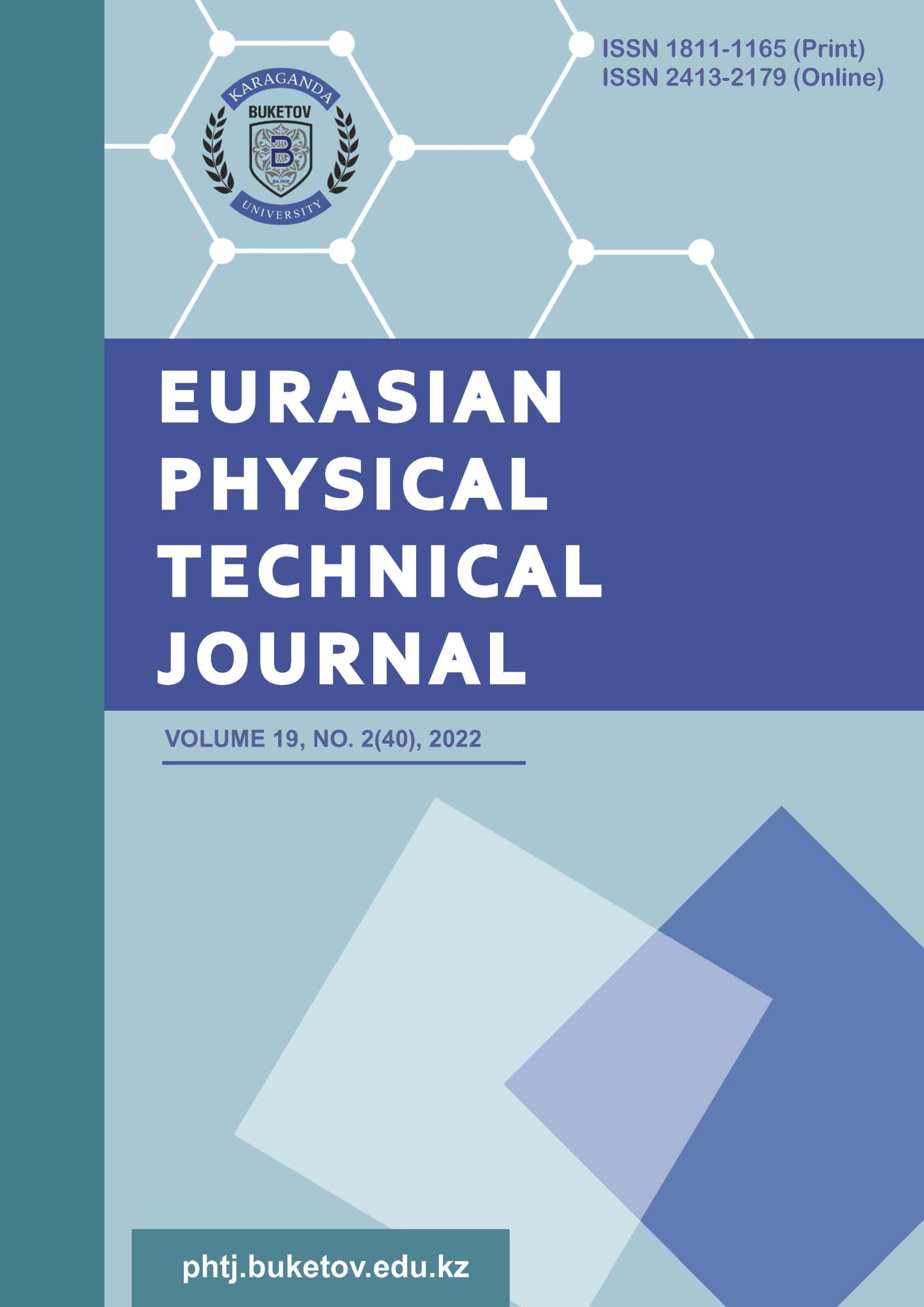INFLUENCE OF PHASE FORMATION PROCESSES IN LITHIUM ZIRCONATE CERAMICS ON STRENGTH AND THERMAL PROPERTIES
DOI:
https://doi.org/10.31489/2022No2/13-18Keywords:
lithium-containing ceramics, phase transformations, hardness, thermal conductivity, nuclear materialsAbstract
The article is devoted to the study of the properties of lithium zirconate ceramics obtained by solid-phase
synthesis. The choice of lithium zirconate ceramics as objects of study is due to the great prospects for their use as
materials for tritium propagation. Results of a study of the influence of the LiO/ZrO2/Li2ZrO3 → LiO/Li2ZrO3 →
Li2ZrO3 type phase transformations in ceramics, depending on the annealing temperature, on the strength and
thermophysical parameters of ceramics are obtained. During the studies, it was found that the change in hardness
and crack resistance are directly dependent on the phase composition and concentration of impurity phases in the
composition of ceramics. It has been determined that the displacement of lithium oxide and zirconium dioxide
impurity phases leads to an increase in hardness and an increase in resistance to cracking under single
compression. It has been established that at annealing temperatures above 900°C, the change in strength and
thermophysical parameters is minimal. At the same time, a change in the phase composition of the
LiO/ZrO2/Li2ZrO3 → Li2ZrO3 type ceramics leads to an increase in the thermal conductivity coefficient by (15-
20)%.
References
Lulewicz J.D., et al. Behaviour of Li2ZrO3 and Li2TiO3 pebbles relevant to their utilization as ceramic breeder for the HCPB blanket. Journal of nuclear materials. 2000, Vol. 283, pp. 1361-1365.
Martínez-dlCruz L., Pfeiffer H. Toward understanding the effect of water sorption on lithium zirconate (Li2ZrO3) during its carbonation process at low temperatures. The Journal of Physical Chemistry C. 2010. Vol. 114, №. 20, pp. 9453-9458.
Kordatos A., et al. Defect processes in Li2ZrO3: insights from atomistic modeling. Journal of Materials Science: Materials in Electronics, 2017. Vol. 28, №. 16. pp. 11789-11793.
Mukai K., Sanchez F., Knitter R. Chemical compatibility study between ceramic breeder and EUROFER97 steel for HCPB-DEMO blanket. Journal of Nuclear Materials. 2017, Vol. 488. pp. 196-203.
Carella E., et al. Tritium modelling in HCPB breeder blanket at a system level. Fusion Engineering and Design. 2017, Vol. 124, pp. 687-691.
Novoselov I.Yu, Shrager E.R., Tikhonov A. Synthesis of uranium-thorium oxide powders in low-temperature plasma of high frequency torch discharge. Eurasian Physical Technical Journal, 2022, Vol. 19(1), pp. 50-54
Hernandez F.A., et al. An enhanced, near-term HCPB design as driver blanket for the EU DEMO. Fusion Engineering and Design. 2019, Vol. 146, pp. 1186-1191.
Ciampichetti A., et al. Conceptual design of tritium extraction system for the European HCPB test blanket module. Fusion Engineering and Design. 2012, Vol. 87, №. 5-6, pp. 620-624.
Rakhadilov B.K., et al. Effect of the structure formed after bulk and surface hardening on the hardness and wear resistance of 20Cr2Ni4A steel. Eurasian Physical Technical Journal, 2022, Vol.19(1), pp. 20-25
Dell'Orco G., et al. Experimental tests on Li-ceramic breeders for the helium cooled pebble bed (HCPB) blanket design. Fusion engineering and design. 2003, Vol. 69, №. 1-4, pp. 233-240.
Rao G. J., et al. Fabrication of Li4SiO4-Li2ZrO3 composite pebbles using extrusion and spherodization technique with improved crush load and moisture stability. Journal of Nuclear Materials. 2019, Vol. 514, pp. 321-333.
Cipa J., et al. X-ray induced defects in advanced lithium orthosilicate pebbles with additions of lithium metatitanate. Fusion Engineering and Design. 2019, Vol. 143, pp. 10-15.
Rex K.A., et al. Defect Properties and Lithium Incorporation in Li2ZrO3. Energies. 2021, Vol. 14, №. 13, pp. 3963-3970.
Kulsartov T., et al. Modeling of hydrogen isotopes release from lithium ceramics Li2TiO3 during in-situ experiments using vacuum extraction method. Fusion Engineering and Design. 2021, Vol. 170, pp. 112705.
Gong Y., et al. Improvement of crushing strength and thermal conductivity by introduction of hetero-element Al into Li4SiO4.Ceramics International. 2019, Vol. 45, №. 18, pp. 24564-24569.
Yang M., et al. Tritium release behavior of Li4SiO4 and Li4SiO4+ 5 mol% TiO2 ceramic pebbles with small grain size. Journal of Nuclear Materials. 2019, Vol. 514, pp. 284-289.
Piazza G., et al. Behaviour of ceramic breeder materials in long time annealing experiments. Fusion engineering and design, 2001, Vol. 58. pp. 653-659.
Abyshev B., et al. Study of Radiation Resistance to Helium Swelling of Li2ZrO3/LiO and Li2ZrO3 Ceramics. Crystals, 2022, Vol. 12, №. 3. pp. 384-390.
Zdorovets M.V., et al. Study of Phase Formation Processes in Li2ZrO3 Ceramics Obtained by Mechanochemical Synthesis. Crystals. 2021, Vol. 12, №. 1. pp. 21-30.
Shlimas D., Kozlovskiy A. L., Zdorovets M. Study of Corrosion Resistance and Degradation Mechanisms in LiTiO2-Li2TiO3 Ceramic. Crystals. 2021, Vol. 11, №. 7, pp. 753.













